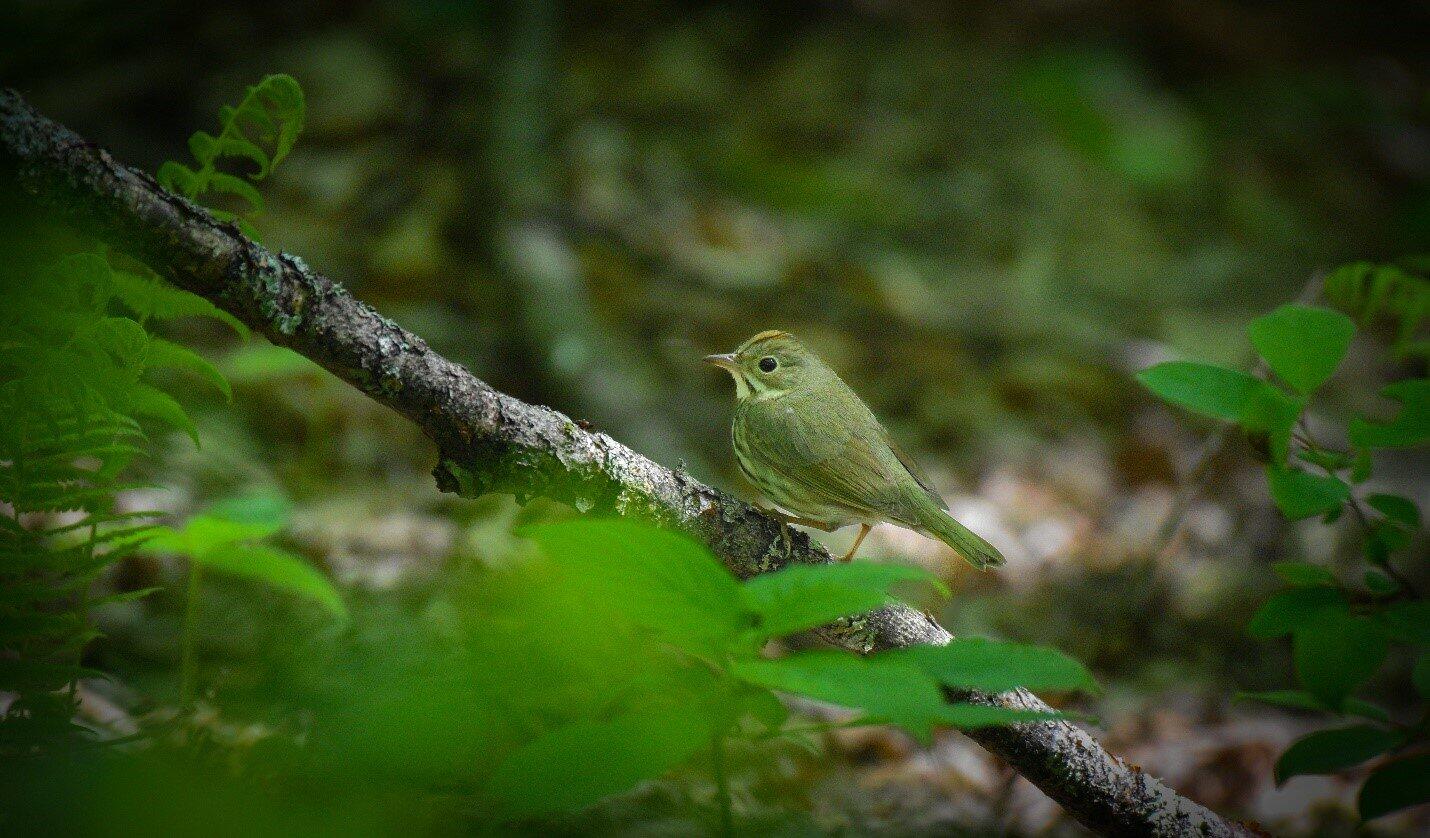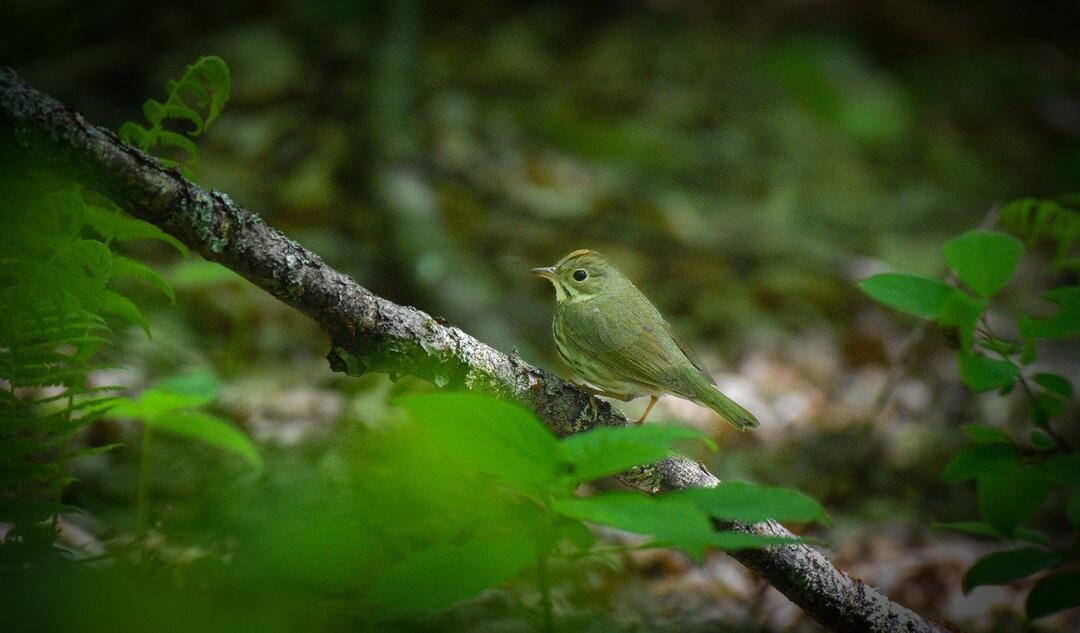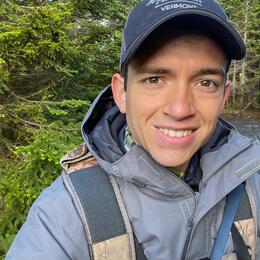By Jacob Crawford, Forest Conservation Intern
When you think of summer, what comes to mind for you? Some may think of the lapping of waves on a lakeside beach, the ripening of wild berries, or the peaceful twinkling of fireflies on a humid night. Some seasonal events associated with summer are certainly easier to observe than others.
While the morning chorus of birds in late spring and summer is unmistakable, the actual nesting of these same bird species often goes unnoticed. From late February, when the first Great-horned Owl egg is laid, to the last Eastern Bluebird to leave the nest in early September, the nesting season of the northeastern US is quite extensive (Bull 1974). Each spring and summer, the forests of New York and Vermont host over 80 species of breeding birds, many of which have males that will sing to attract a mate and maintain their territories (Faccio et al. 2017). Males are often easy to hear and see, sporting a wide variety of brightly patterned plumages with orange, red, green, yellow, blue, black, white, and brown. While it is true that not all bird species are sexually dimorphic, meaning that the males can be visually differentiated from the females, it is a general rule of thumb that most females have drabber, less flashy, colors designed for camouflage. This cryptic coloration offers females enhanced concealment while incubating eggs.
The forests of New England hold the highest diversity of breeding birds anywhere in the country! With all these birds using the same forests, you may wonder how they are able to coexist and raise young without high competition for resources (e.g. food, space, and suitable nesting locations). This is an excellent question that brings us to the concept of a niche. According to the Oxford Dictionary, a niche is a "position or role taken by a kind of living thing within its community." Essentially, different bird species fill slightly to drastically different specialized niches within the forest ecosystem and may be best suited for utilizing a very specific forest structure or composition that other species are less adapted for.
Let’s take a moment to examine a few different examples, starting with a very charismatic and vocal warbler, the Ovenbird. The Ovenbird is a forest floor specialist that is seldomly found higher than just a few feet off the ground, except to belt out it’s piercing “piZZA-piZZA-piZZA-piZZA” song from a branch in the canopy. This species prefers deciduous to mixed (deciduous and coniferous) forests with a closed canopy, lower amounts of vegetation on the ground and, most importantly, a thick layer of leaves carpeting the forest floor (Porneluzi et al. 2020)! These leaves host an abundance of forest invertebrates, such as ants, beetles, centipedes, and millipedes for the Ovenbirds to eat and feed their young. This thick leaf layer also provides the perfect substrate for the construction of the Ovenbird's unique dome shaped nest that resembles a traditional pizza oven.
Other forest birds that nest on the ground include Hermit Thrush, Veery, Canada Warbler, Ruffed Grouse, and American Woodcock, but each of these species fills a different niche. Each of these species has a different forest composition preference, diet, and behavior, making it unlikely to find all species coexisting in the same area. For example, the American Woodcock nests in dense stands of young aspen or alder and uses its long bill to probe for earthworms (USDA 2010). In contrast, the Hermit Thrush, while still a ground nesting bird species, prefers more mature forests ranging in from nearly pure conifers to pure deciduous and is less reliant on dense tree cover close to the ground (Dellinger et al. 2020). Unlike the American Woodcock, the Hermit Thrush feeds on insects found in the leaves and on small saplings and shrubs and is certainly not an earthworm specialist. It’s this affinity for different habitats and reliance on different food sources that separate the niche of the American Woodcock from the Hermit Thrush and influences the contrasting distribution of these two species across the landscape.
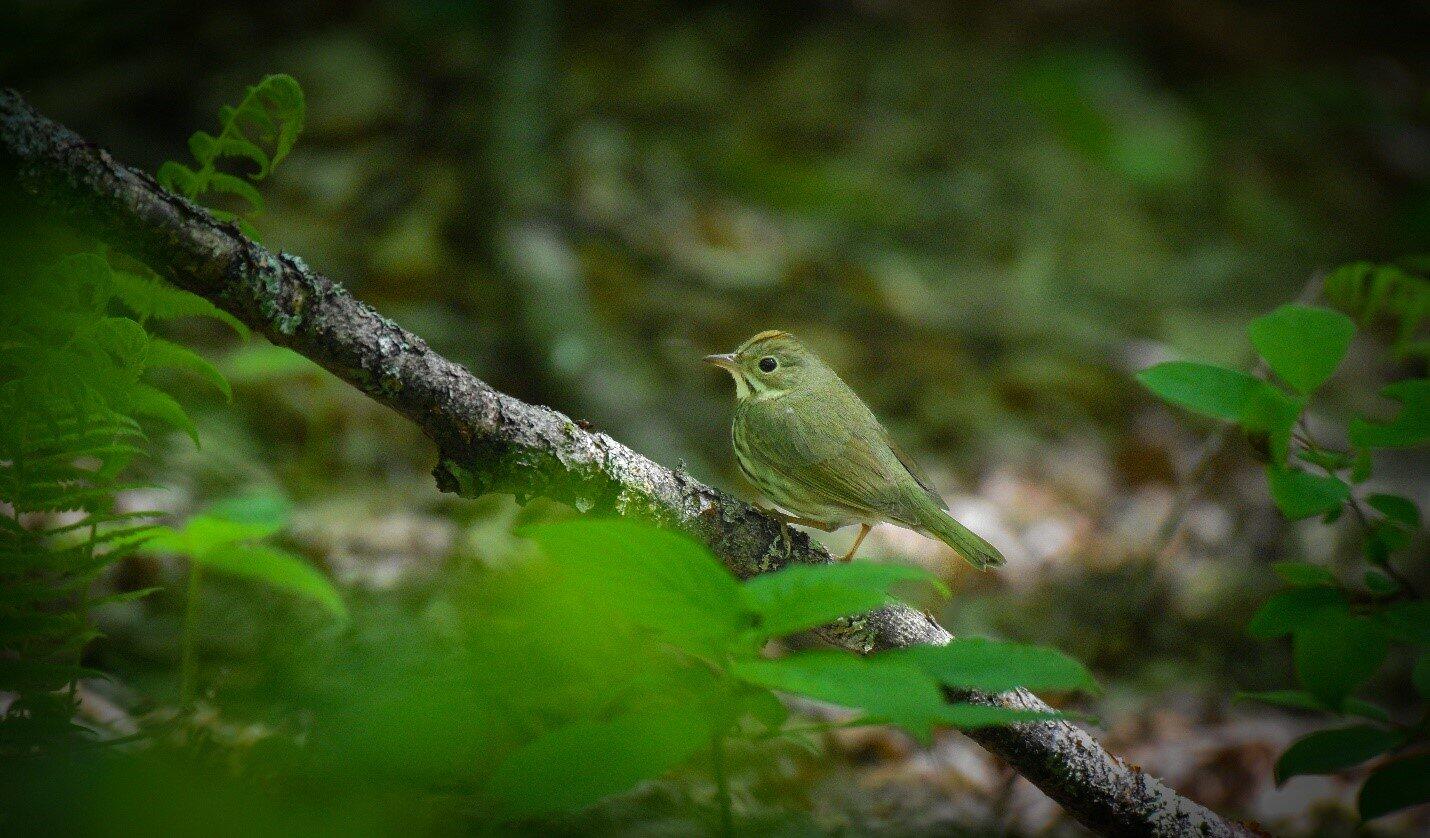
As we begin lifting our focus away from the forest floor, we come across another suite of bird species that actively use the forest understory. The understory includes all saplings, woody stems, and branches that occupy the space up to 6 feet above the ground. One iconic understory specialist is the Black-throated Blue Warbler.
Along with the Ovenbird, the Black-throated Blue Warbler is considered a neotropical, long-distance migrant. It spends its winters on various islands in the Caribbean Sea and along the east coast of Central America from Panama to the Yucatan Peninsula of Southern Mexico (Holmes et al. 2020). Each spring, Black-throated Blue Warblers embark in a migration that can top over 3,000 miles for some individuals and return to their breeding grounds in the Appalachian Mountains, and most inland forested regions of New England, and Southeastern Canada. Vermont and New York are truly at the core of the Black-throated Blue Warbler breeding range and ensuring ample suitable habitat in our forestlands will have an impact on their success and populations for decades to come. Deciduous and mixed deciduous/coniferous forests with dense understory growth are often occupied by breeding Black-throated Blue Warblers in this range. The female begins building her nest shortly after finding a mate and will select a nest site among the dense understory, typically just a few feet off the ground. Once finished, the nest is a delicate bowl constructed of thin pieces of bark that is held together with spider webs and silk with a lining of pine needles, moss, and even mammal hair (Harding 1931). Low growing hobblebush, striped maple, and American beech are some of the Black-throated Blue Warbler’s favorite tree species, so keep an ear out for the male’s low, buzzy song around these habitats; “zurrr-zurrr-zzREEEE”.
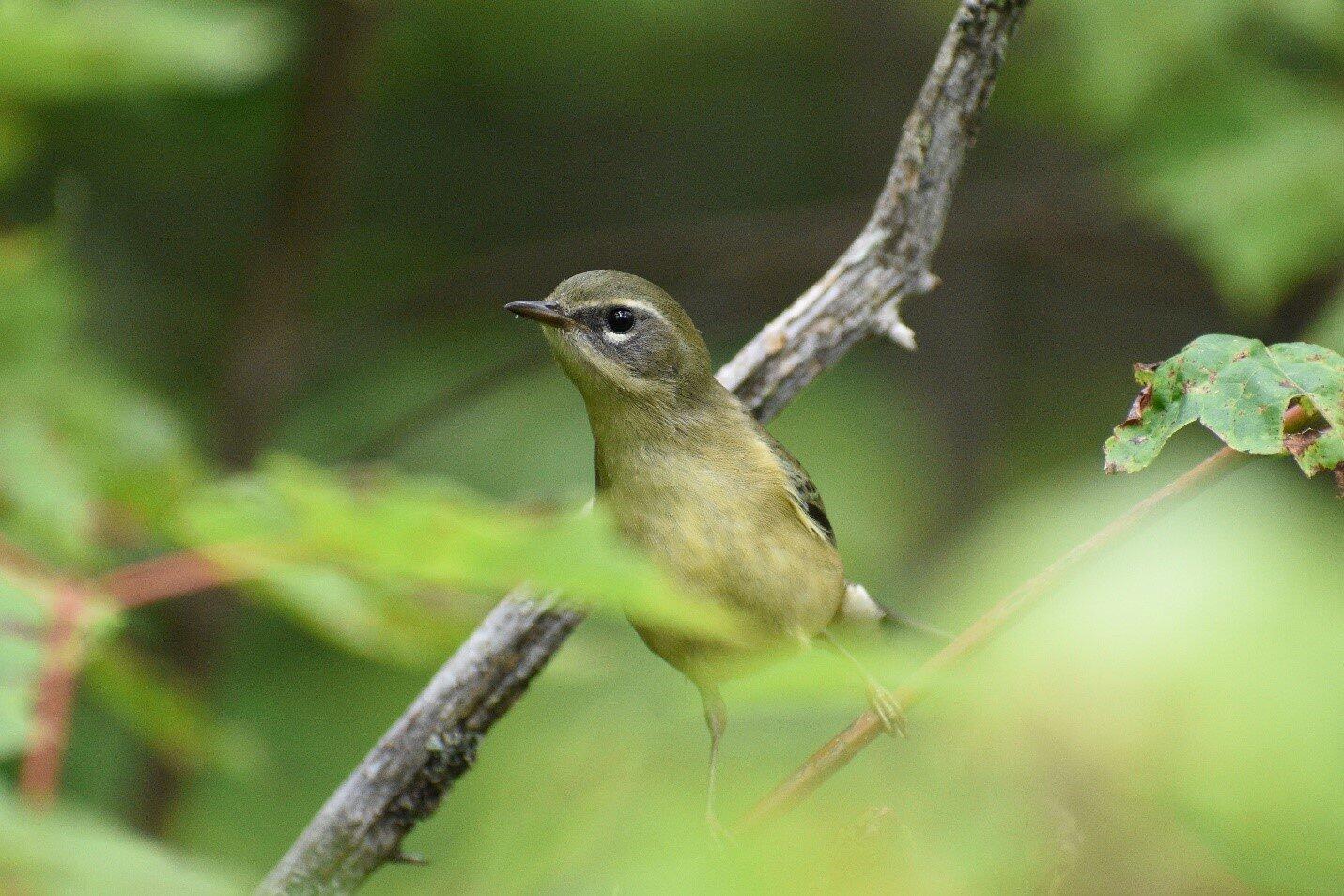
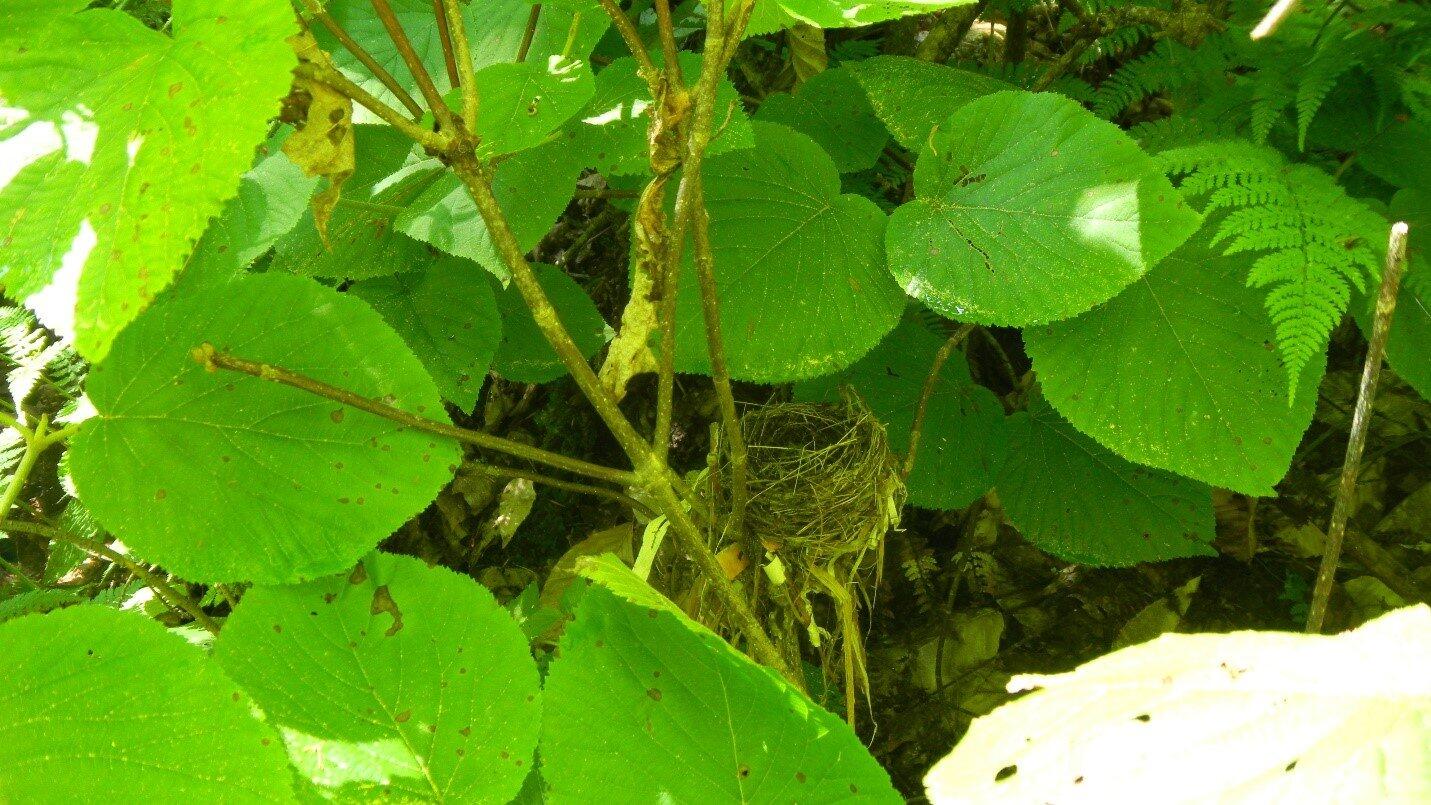
The remainder, and majority, of forest nesting bird species nest above our heads, either in the midstory (trees and branches occupying the space between 6 and 30 feet in height) or in the overstory (any branches and canopies above 30 feet in height). It is here you can expect to find a wide diversity of bird species nesting and a diversity of nest types, depending on the age and tree species composition of the forest. Some birds, such as the Baltimore Oriole, will create an intricate hanging nest that almost resembles a woven basket or sock (Rising and Flood 2020). Blackburnian Warblers are conifer specialists that will construct their nests, almost precariously, at the end of a branch very high in the canopy of spruce, fir, or hemlock (Morse 2020).
Not all birds construct bowl shaped nests out of fine vegetation and spider silk though. Some birds take a more direct and brute-force method to create a place to raise their young! Some bird species excavate cavities in dead or decaying trees to nest in, such as From chickadees, nuthatches, woodpeckers, and even the tiny Winter Wren. Excavating a cavity large enough to fit a nest full of young is hard work, but the massive Pileated Woodpecker can make it look easy, often repeatedly removing wood chips by the mouthful! Following a nest construction period of just over one month (Bull and Jackson 2020), the result is a robust, well-sheltered, and hidden home. Once vacated, this cavity will likely serve as a suitable nesting cavity for everything from Northern Saw-whet Owls, Wood Ducks, American Kestrels, and even mammals such as squirrels, bats, and fisher.
It is this secondary use of Pileated Woodpecker nesting cavities that deemed this species as a “keystone habitat modifier” in a study by Aubry and Raley in 2002. A keystone species is any organism upon which many other species depend, to the point where, if the keystone species were removed, the ecosystem would be drastically and disproportionately changed when compared to the removal of other species. Without the cavities created by Pileated Woodpeckers, many other species would be forced to rely solely on naturally formed cavities for nesting and survival. The Pileated Woodpecker is also reliant on suitable standing dead trees (snags) and large diameter trees to be able to successfully excavate these cavities. Nearly all cavity nesting species rely on snags to find and/or create suitable nesting sites and it is for this reason that snag and cavity tree retention and creation are often suggestions for management in any forest ecosystem by the Woods, Wildlife and Warblers Project.
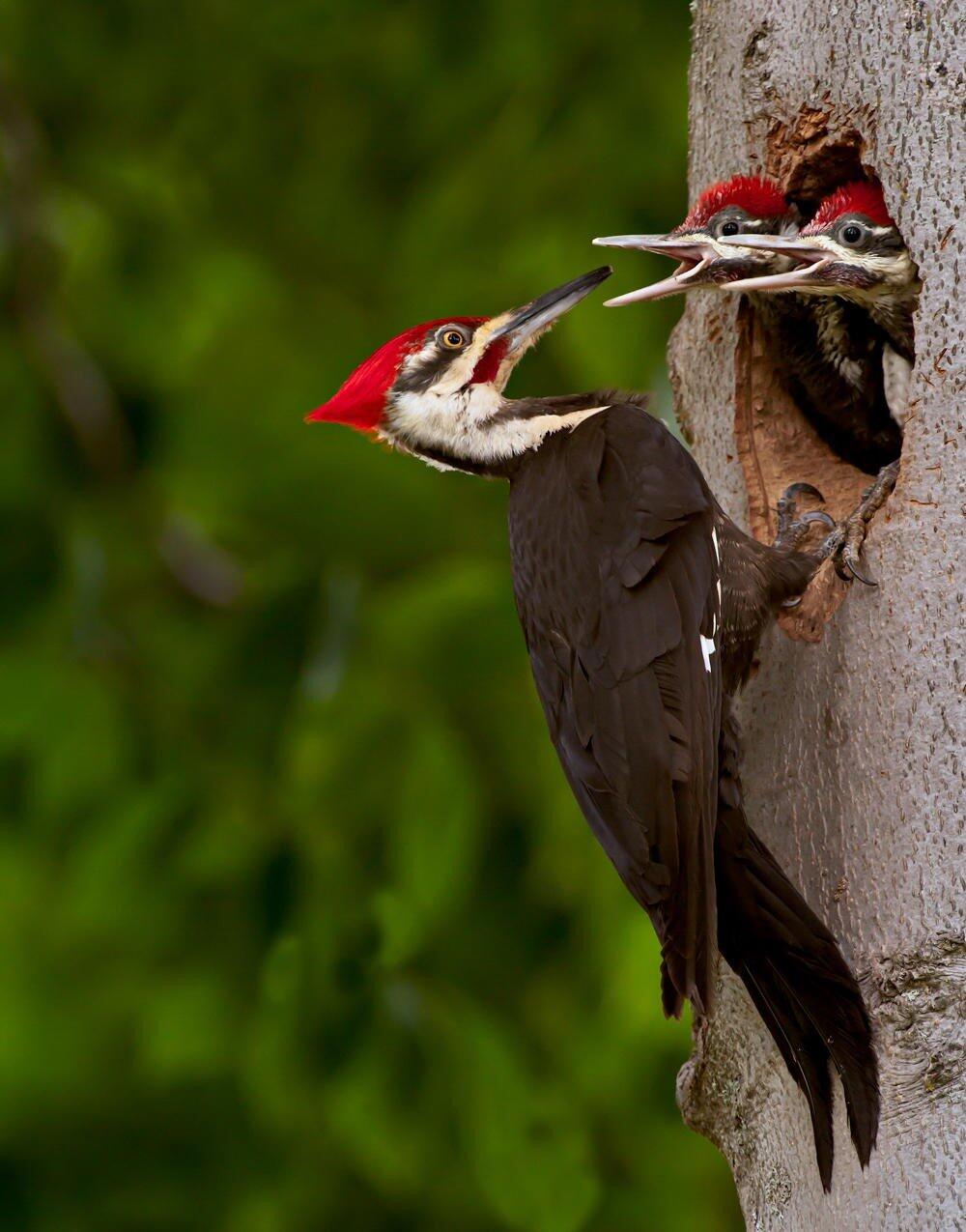
From the leaf litter on the ground, to the dense understory layer, to large snags leaving legacies of trees of the past, many aspects of the forest provide crucial breeding habitat for the birds that utilize the forests. With a high diversity of breeding birds comes a need for diverse habitats and sufficient structure in our forests. Structure can be interpreted in many ways, but in the eyes of the Woods, Wildlife and Warblers project, structure can be thought of in two primary categories: horizontal and vertical.
Horizontal structure involves having a variety of different forest and habitat types incorporated in the landscape. This includes everything from forest edges and young forest habitats found in abandoned agricultural fields, to some of the most mature forest stands of the Adirondacks and Green Mountains. Typically, we see horizontal structure on smaller scales. Young forest growth can be naturally established in small openings within mature forests as a result of natural disturbances or planned harvesting and land management. We would consider this diverse forest composition to be enhancing the horizontal structure of the forest.
Vertical structure is established starting at ground level with downed trees and limbs then moving upward through the understory, midstory, and eventually to the overstory. Whether you are moving across the landscape from one habitat to the next, or searching high and low through the forest canopies, you will find an incredible array of colorful and charismatic birds. Each species representing a unique nesting habit and the presence of a specific combination of forest structure.
Works cited:
Bull, E. L. and J. A. Jackson (2020). Pileated Woodpecker (Dryocopus pileatus), version 1.0. In Birds of the World (A. F. Poole, Editor). Cornell Lab of Ornithology, Ithaca, NY, USA. https://doi-org.ezproxy.uvm.edu/10.2173/bow.pilwoo.01
Bull, J. L. (1974). Birds of New York State (1st ed.). Doubleday.
Dellinger, R., P. B. Wood, P. W. Jones, and T. M. Donovan (2020). Hermit Thrush (Catharus guttatus), version 1.0. In Birds of the World (A. F. Poole, Editor). Cornell Lab of Ornithology, Ithaca, NY, USA. https://doi-org.ezproxy.uvm.edu/10.2173/bow.herthr.01
Faccio, S.D., J.D. Lambert, and J.D. Lloyd. 2017. The status of Vermont forest birds: A quarter century of monitoring. Vermont Center for Ecostudies, Norwich, VT. 32 pages.
Harding, K. C. (1931). Nesting habits of the Black-throated Blue Warbler. Auk 48:512-522.
Holmes, R. T., S. A. Kaiser, N. L. Rodenhouse, T. S. Sillett, M. S. Webster, P. Pyle, and M. A. Patten (2020).
Black-throated Blue Warbler (Setophaga caerulescens), version 1.0. In Birds of the World (P. G. Rodewald, Editor). Cornell Lab of Ornithology, Ithaca, NY, USA. https://doi-org.ezproxy.uvm.edu/10.2173/bow.btbwar.01
Morse, D. H. (2020). Blackburnian Warbler (Setophaga fusca), version 1.0. In Birds of the World (A. F. Poole, Editor). Cornell Lab of Ornithology, Ithaca, NY, USA. https://doi-org.ezproxy.uvm.edu/10.2173/bow.bkbwar.01
niche noun - Definition, pictures, pronunciation and usage notes | Oxford Advanced Learner’s Dictionary at OxfordLearnersDictionaries.com. (n.d.). Oxford Learner’s Dictionary. Retrieved June 30, 2022, from https://www.oxfordlearnersdictionaries.com/us/definition/english/niche_1....
Porneluzi, P., M. A. Van Horn, and T. M. Donovan (2020). Ovenbird (Seiurus aurocapilla), version 1.0. In Birds of the World (A. F. Poole, Editor). Cornell Lab of Ornithology, Ithaca, NY, USA. https://doi-org.ezproxy.uvm.edu/10.2173/bow.ovenbi1.01
Rising, J. D. and N. J. Flood (2020). Baltimore Oriole (Icterus galbula), version 1.0. In Birds of the World (P. G. Rodewald, Editor). Cornell Lab of Ornithology, Ithaca, NY, USA. https://doi-org.ezproxy.uvm.edu/10.2173/bow.balori.01
U.S. Department of Agriculture, Natural Resources Conservation Service. 2010. American Woodcock: Habitat Best Management Practices for the Northeast by Scot J. Williamson. Wildlife Insight. Washington, DC.

